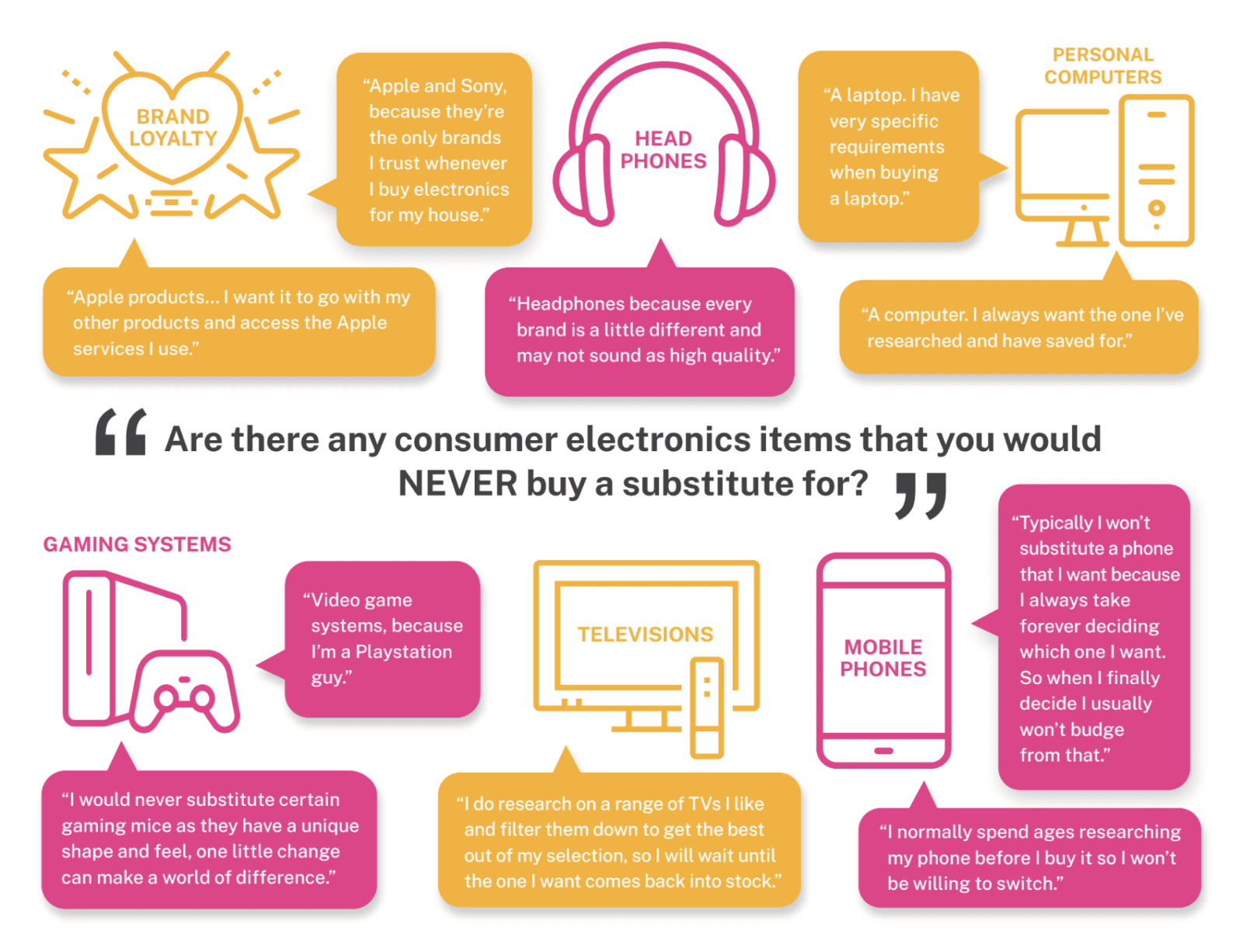New Survey Report: How to Connect With Consumer Electronics Lovers in 2022
The world of online shopping has had a bumpy ride the past couple of years. The pandemic caused a massive influx of online shoppers, and those shoppers have been experiencing more out-of-stock messages than ever before. Between supply chain issues and stringent shopper preferences, brands and retailers have their work cut out for them.
Shoppers of consumer electronics are especially discerning, and catering to their tastes can be a challenge when options are limited. The painful irony is that demand has never been higher, yet supply is struggling to meet it thanks to an ongoing international chip shortage in addition to general supply chain challenges.
Lucidworks surveyed shoppers in the U.S. and U.K. to get a better understanding of their preferences when shopping online for consumer electronics, how flexible they might be when stock is low, and where they draw the line on quality and brand loyalty.
There is good news, however. The survey report reveals three main solutions for keeping consumer electronics shoppers engaged and open to options:
- Make relevant electronics recommendations when stock is low or out.
- Let shoppers know when their preferred items are back in stock through alerts and notifications.
- Connect shoppers with the items you do have through smart search and filtering–a proven solution for boosting average order value.
Relevant Recommendations Keep Electronics Shoppers Engaged
There’s no way around it–when customers can’t find the item they are looking for, 62% will simply leave your digital storefront and go elsewhere. To compound this, 87% of those same shoppers mention at least one item that they will absolutely not be flexible with. Several mentioned that the reason they will only buy a specific smartphone, TV, or personal computer is because of the high price point and the amount of research that went into selecting it.

Though there might be seemingly little flexibility when an item is out of stock, there is still plenty of opportunity to keep customers engaged with a retailer’s website. In an earlier survey, we found that the majority of shoppers (61%) like to do research every time or often via reviews on the brand’s website where they’ll be purchasing from. If a retailer or brand’s recommendation strategy is product-only, they could be losing shoppers to other websites during the research phase. In other words, making other kinds of relevant content recommendations on the website can keep shoppers around, and potentially interested in an alternative.
Keep Customers Tuned In With Stock Notifications
So a customer’s preferred item is out of stock and it is almost certain they will leave your website if that is the case. What then? Well, retailers still have a chance to keep them engaged. Given how much time and effort goes into researching a preferred electronics item, nearly a third of shoppers say they are not interested in alternatives and are willing to wait. Retailers and brands can build a bridge directly to their customers via stock notifications on their preferred channel.

The most common reason shoppers won’t budge on an item is because it either does not match their taste or is outside of their price range. Shoppers only tend to make consumer electronics purchases an average of four times a year, and proactive alerts via email, text message, or app notification are a great way to make sure shoppers get what they need. This is also a great way to feed them additional recommendations on alternative or complementary products.
Make Sure Customers Can Find the Gadgets You Do Have
Only 20% of electronics shoppers mentioned they are being given recommendations every time an item they want is unavailable and more than two-thirds say sometimes they see recommendations but not always. And though many shoppers will outright leave a website if what they want is not available, at least 20% of shoppers mentioned that they will hang around and seek an alternative. Our survey also found that low stock isn’t the only reason they end up leaving a website empty-handed. 12% mentioned that their searches were taking them to “dead end” pages. To make matters worse, shoppers might be using different keywords to find items and not find them–even if they are in stock.
An all-encompassing solution that retailers and brands should embrace to combat both scenarios is AI-driven semantic search. This technology learns from customer behavior to associate shoppers’ queries with products that have a similar purpose. By using shoppers’ behavior to train search models, results are continually tuned and improved. Using deep learning, semantic search is able to yield results to queries based on semantic meaning rather than simply matching products via keywords.
The Future of Consumer Electronics Shopping
Chip shortages, supply chain issues, and inflexible tastes all add up to one thing–retailers and brands need to do everything they can to personalize and streamline their ecommerce experiences if they want to keep customers coming back. With only so many chances to deliver on the needs of consumer electronics shoppers each year, each point along the buying journey is critical.
Our recent consumer electronics shopper survey digs even deeper into the preferences of gadget shoppers and what they expect when arriving at a digital storefront–stock or no stock. Download the report today to get all the insights.